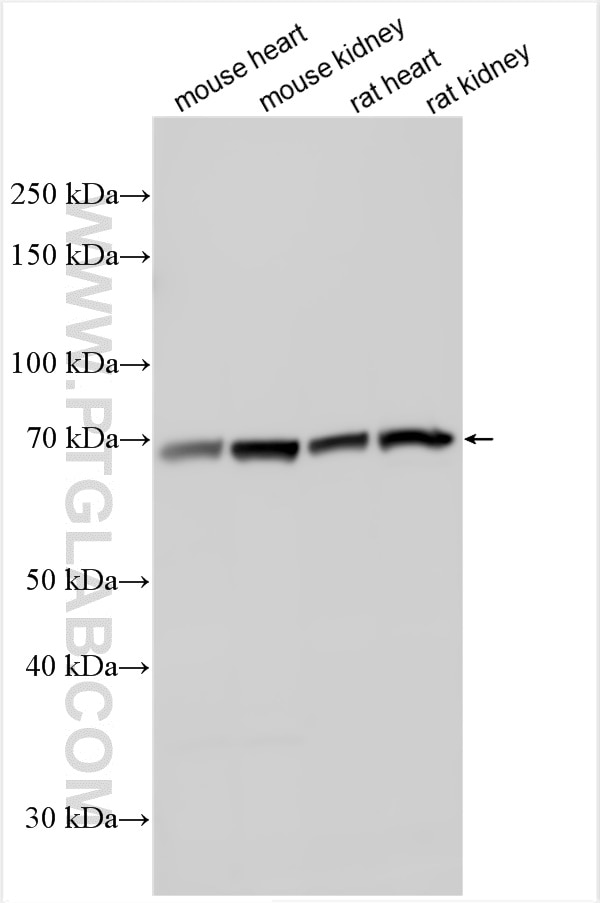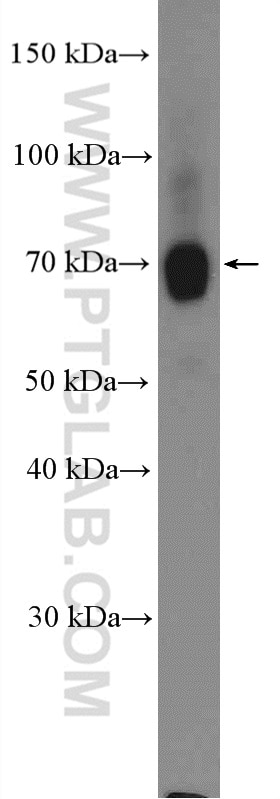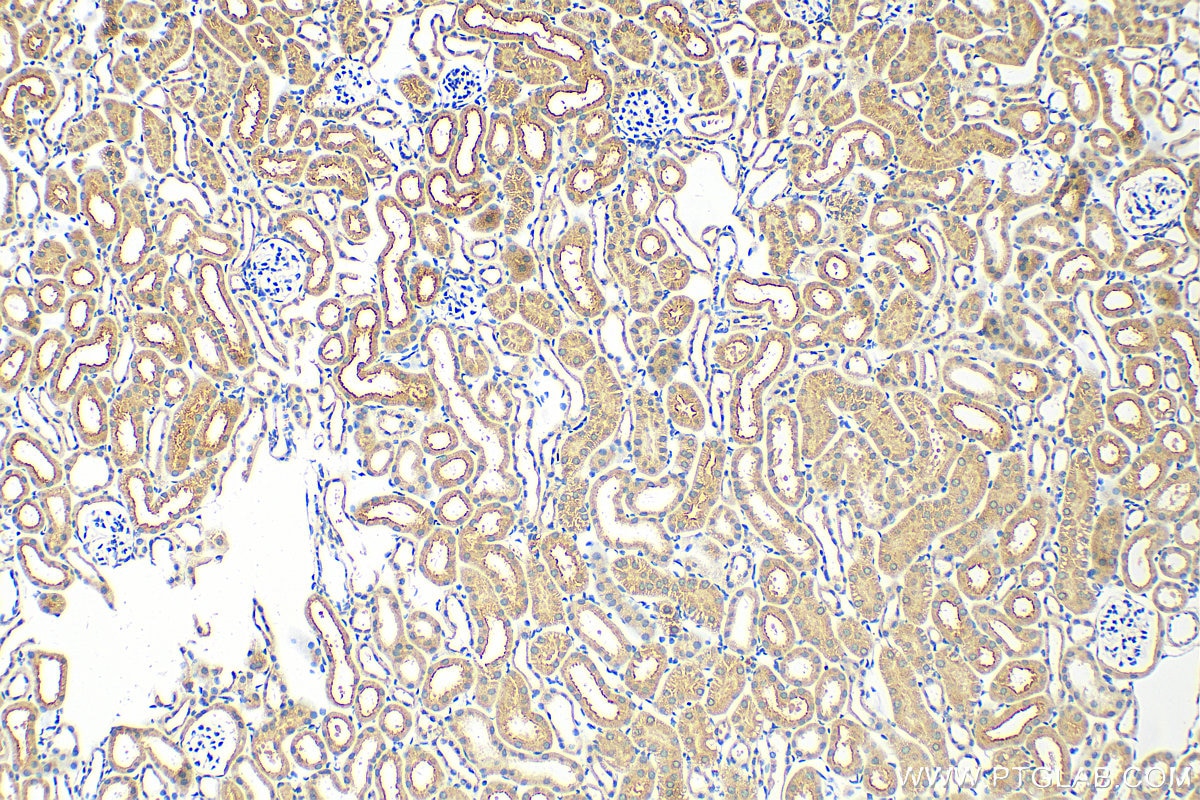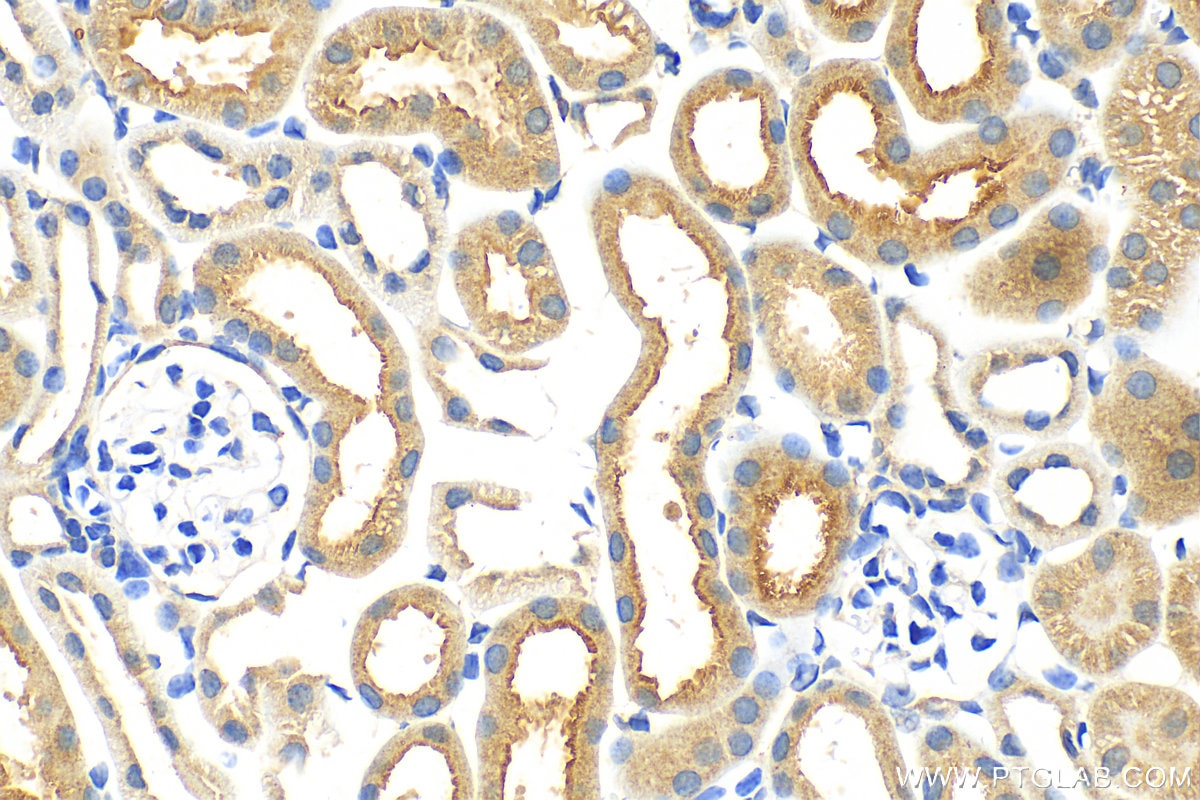- Phare
- Validé par KD/KO
Anticorps Polyclonal de lapin anti-URAT1
URAT1 Polyclonal Antibody for WB, IHC, ELISA
Hôte / Isotype
Lapin / IgG
Réactivité testée
Humain, porc, rat, souris
Applications
WB, IHC, IF, ELISA
Conjugaison
Non conjugué
N° de cat : 14937-1-AP
Synonymes
Galerie de données de validation
Applications testées
| Résultats positifs en WB | tissu cardiaque de souris, tissu cardiaque de rat, tissu rénal de porc, tissu rénal de rat, tissu rénal de souris |
| Résultats positifs en IHC | tissu rénal de souris, il est suggéré de démasquer l'antigène avec un tampon de TE buffer pH 9.0; (*) À défaut, 'le démasquage de l'antigène peut être 'effectué avec un tampon citrate pH 6,0. |
Dilution recommandée
| Application | Dilution |
|---|---|
| Western Blot (WB) | WB : 1:1000-1:6000 |
| Immunohistochimie (IHC) | IHC : 1:200-1:800 |
| It is recommended that this reagent should be titrated in each testing system to obtain optimal results. | |
| Sample-dependent, check data in validation data gallery | |
Applications publiées
| KD/KO | See 2 publications below |
| WB | See 85 publications below |
| IHC | See 8 publications below |
| IF | See 6 publications below |
Informations sur le produit
14937-1-AP cible URAT1 dans les applications de WB, IHC, IF, ELISA et montre une réactivité avec des échantillons Humain, porc, rat, souris
| Réactivité | Humain, porc, rat, souris |
| Réactivité citée | rat, Humain, souris |
| Hôte / Isotype | Lapin / IgG |
| Clonalité | Polyclonal |
| Type | Anticorps |
| Immunogène | URAT1 Protéine recombinante Ag6770 |
| Nom complet | solute carrier family 22 (organic anion/urate transporter), member 12 |
| Masse moléculaire calculée | 60 kDa |
| Poids moléculaire observé | 65-70 kDa, 40 kDa |
| Numéro d’acquisition GenBank | BC053348 |
| Symbole du gène | URAT1 |
| Identification du gène (NCBI) | 116085 |
| Conjugaison | Non conjugué |
| Forme | Liquide |
| Méthode de purification | Purification par affinité contre l'antigène |
| Tampon de stockage | PBS with 0.02% sodium azide and 50% glycerol |
| Conditions de stockage | Stocker à -20°C. Stable pendant un an après l'expédition. L'aliquotage n'est pas nécessaire pour le stockage à -20oC Les 20ul contiennent 0,1% de BSA. |
Informations générales
Human urate anion exchanger (URAT1), also known as SLC22A12, is a urate transporter located in the proximal tubules of human kidney and responsible for urate reabsorption. Defects in gene encoding URAT1 cause hypouricemia renal type 1 (RHUC1). This antibody recognizes the native and glycosylated URAT1 between 65 and 70 kDa as well as the truncated 40kDa protein.
Protocole
| Product Specific Protocols | |
|---|---|
| WB protocol for URAT1 antibody 14937-1-AP | Download protocol |
| IHC protocol for URAT1 antibody 14937-1-AP | Download protocol |
| Standard Protocols | |
|---|---|
| Click here to view our Standard Protocols |
Publications
| Species | Application | Title |
|---|---|---|
Phytomedicine Amelioration effects of α-viniferin on hyperuricemia and hyperuricemia-induced kidney injury in mice | ||
Phytomedicine The inhibitory effect of Astragalus flavone extract on hyperuricemia and its underlying molecular mechanism by targeting JNK/AP-1/NLRP3/IL-1β signaling pathway | ||
Phytomedicine Mechanistic insights into the potentiation and toxicity mitigation of myocardial infarction treatment with salvianolate and ticagrelor | ||
Mol Metab URAT1-selective inhibition ameliorates insulin resistance by attenuating diet-induced hepatic steatosis and brown adipose tissue whitening in mice. | ||
Food Funct Anti-hyperuricemic potential of stevia (Stevia rebaudiana Bertoni) residue extract in hyperuricemic mice | ||
Int J Mol Sci Multiple-Purpose Connectivity Map Analysis Reveals the Benefits of Esculetin to Hyperuricemia and Renal Fibrosis. |





